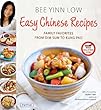Introduction
One of the most popular ethnic foods in the US, Chinese cuisine offers a huge variety dishes, far more than the egg rolls, fried rice, and fortune cookies many people think of first. By the way, fortune cookies are not Chinese at all - they were created in America!
Of course, China is a huge country, and typical Chinese ingredients and dishes are different depending on the region. In China's north (where Beijing is located), winters are bitterly cold and droughts and floods are common in other parts of the year. Here, meals based on the foods that can survive the harsh weather—root vegetables, cabbage, millet, barley, and wheat—are common. Rice is less common because it does not grow as well as in the south.1
In southeastern China (where Shanghai is located), the climate is warmer and a wider variety of foods are available, including rice, typical Chinese vegetables, and fresh fish and seafood.2 Western China (including the province Sichuan or Szechuan) has many fertile plains perfect for for rice production. Here, the food is generally spicy, often thanks to pungent Sichuan pepper.1 Finally, in China's south, the subtropical climate and coasts offer an abundance of produce, fish, and seafood.

Ingredients
In traditional Chinese cooking, meat and seafood were often eaten in smaller quantities and vegetables and grains played a bigger role. 2 Meat consumption is on the rise, however, and chicken, duck, pork, beef, fish, and seafood are all used in traditional Chinese recipes.
Chinese cooking also uses a variety of
sauces, pastes, vinegar, and oils, including soy sauce, plum sauce, chili sauce, hoisin sauce, oyster sauce,  black bean paste, sweet red bean paste, rice vinegar, sesame oil, hot chili oil, and peanut oil. Chili peppers, ginger, garlic, cinnamon, fresh coriander/cilantro, curry powder, star anise, five spice powder (which can contain anise, fennel seed, cinnamon, clove, ginger, nutmeg, or pepper), and white pepper are common seasonings.
black bean paste, sweet red bean paste, rice vinegar, sesame oil, hot chili oil, and peanut oil. Chili peppers, ginger, garlic, cinnamon, fresh coriander/cilantro, curry powder, star anise, five spice powder (which can contain anise, fennel seed, cinnamon, clove, ginger, nutmeg, or pepper), and white pepper are common seasonings.
As for grains, wheat egg noodles, rice noodles, mung bean noodles (also called glass or cellophane noodles), long-grain white rice, glutinous or sticky rice, as well as a number of products made from wheat or rice flour (e.g. dumpling dough, wrappers for wontons/spring rolls) are used.
Common produce include Chinese broccoli (also known as Chinese kale, kai-lan, or gai-lan), bok choy, napa cabbage, mung bean sprouts, green onion,
 garlic, ginger, Asian eggplant (which are more slender than the huge round European varieties), snow peas, baby corn, and dried or fresh mushrooms, such as black, straw, wood ear, shiitake, or oyster mushrooms.3
garlic, ginger, Asian eggplant (which are more slender than the huge round European varieties), snow peas, baby corn, and dried or fresh mushrooms, such as black, straw, wood ear, shiitake, or oyster mushrooms.3
Though harder to find in Western countries, you might check an Asian supermarket for dried tiger lily buds, bamboo shoots, boxthorn seeds, water chestnuts (fresh is best!), and rice wine.4
Traditional Chinese Recipes
Appetizer:
Spring Rolls
Appetizer:
Scallion Pancakes
Soup:
Hot and Sour Soup
Main Dish:
Steamed Pork Buns
Main Dish:
Fried Rice
Main Dish:
Ma Po Tofu
Main Dish:
Peking Duck
Main Dish:
Gong Bao Chicken
Main Dish:
Chow Mein
Dessert:
Sweet Red Bean Soup
Dessert:
Almond Cookies
Recommended Read
Easy Chinese Recipes
This cookbook is great for beginners looking to create simple yet authentic Chinese food with some traditional Chinese recipes.






